1.5 The pipenet module
Contents
1.5 The pipenet module#
With the entire script as a module, we just load the module when we need it. To do this we simply took the contents of the def pipenet() cell and copy and paste into a text file, then name the textfile something memorableful - in my case pipenet.py
To use the module either load it into your python kernel or locate it in the directory where you are working and import the module as illustrated below, because our desired entry point shares the same name as the file, i used a weird syntax. The more convential method is also shown.
# Now import the module (observe the semi-weird syntax)
from pipenet import pipenet
# Now run the simulation
pipenet('PN-E2.txt')
####ECHO INPUT################
Input File: PN-E2.txt
number of nodes : 4
number of pipes : 6
viscosity : 1.1e-05
-----------------------------
node id: 0 , elevation : 0.0 head : 0.0
node id: 1 , elevation : 0.0 head : 0.0
node id: 2 , elevation : 0.0 head : 0.0
node id: 3 , elevation : 0.0 head : 0.0
-----------------------------
pipe id: 0 , diameter : 10.0 , distance : 10.0 , roughness : 1e-05 , flow : 1.0
pipe id: 1 , diameter : 0.67 , distance : 800.0 , roughness : 1e-05 , flow : 1.0
pipe id: 2 , diameter : 0.67 , distance : 700.0 , roughness : 1e-05 , flow : 1.0
pipe id: 3 , diameter : 0.67 , distance : 700.0 , roughness : 1e-05 , flow : 1.0
pipe id: 4 , diameter : 0.67 , distance : 800.0 , roughness : 1e-05 , flow : 1.0
pipe id: 5 , diameter : 0.5 , distance : 600.0 , roughness : 1e-05 , flow : 1.0
-----------------------------
node-arc incidence matrix
[1.0, -1.0, 0.0, -1.0, 0.0, 0.0]
[0.0, 1.0, -1.0, 0.0, 0.0, 1.0]
[0.0, 0.0, 0.0, 1.0, -1.0, -1.0]
[0.0, 0.0, 1.0, 0.0, 1.0, 0.0]
-----------------------------
###EXIT TYPE###
Update not changing --exit and report current update
iteration 39
#####SIMULATION RESULTS#####
Results at iteration = : 39
number of nodes : 4
number of pipes : 6
viscosity : 1.1e-05
-----------------------------
node id: 1 , elevation (feet) : 0.0 head (feet) : 100.0 pressure (psi) : 44.697
node id: 2 , elevation (feet) : 0.0 head (feet) : 90.292 pressure (psi) : 40.358
node id: 3 , elevation (feet) : 0.0 head (feet) : 91.673 pressure (psi) : 40.975
node id: 4 , elevation (feet) : 0.0 head (feet) : 89.815 pressure (psi) : 40.145
-----------------------------
pipe id: 1 , diameter (feet) : 10.0 , distance (feet) : 10.0 , friction factor : 0.03 , flow (cfs) : 10.0
pipe id: 2 , diameter (feet) : 0.67 , distance (feet) : 800.0 , friction factor : 0.016 , flow (cfs) : 4.04
pipe id: 3 , diameter (feet) : 0.67 , distance (feet) : 700.0 , friction factor : 0.016 , flow (cfs) : 0.227
pipe id: 4 , diameter (feet) : 0.67 , distance (feet) : 700.0 , friction factor : 0.016 , flow (cfs) : 3.96
pipe id: 5 , diameter (feet) : 0.67 , distance (feet) : 800.0 , friction factor : 0.016 , flow (cfs) : 0.773
pipe id: 6 , diameter (feet) : 0.5 , distance (feet) : 600.0 , friction factor : 0.015 , flow (cfs) : 0.187
-----------------------------
# Now import the module (conventional syntax)
import pipenet
# Now run the simulation
pipenet.pipenet('PN-E2.txt')
####ECHO INPUT################
Input File: PN-E2.txt
number of nodes : 4
number of pipes : 6
viscosity : 1.1e-05
-----------------------------
node id: 0 , elevation : 0.0 head : 0.0
node id: 1 , elevation : 0.0 head : 0.0
node id: 2 , elevation : 0.0 head : 0.0
node id: 3 , elevation : 0.0 head : 0.0
-----------------------------
pipe id: 0 , diameter : 10.0 , distance : 10.0 , roughness : 1e-05 , flow : 1.0
pipe id: 1 , diameter : 0.67 , distance : 800.0 , roughness : 1e-05 , flow : 1.0
pipe id: 2 , diameter : 0.67 , distance : 700.0 , roughness : 1e-05 , flow : 1.0
pipe id: 3 , diameter : 0.67 , distance : 700.0 , roughness : 1e-05 , flow : 1.0
pipe id: 4 , diameter : 0.67 , distance : 800.0 , roughness : 1e-05 , flow : 1.0
pipe id: 5 , diameter : 0.5 , distance : 600.0 , roughness : 1e-05 , flow : 1.0
-----------------------------
node-arc incidence matrix
[1.0, -1.0, 0.0, -1.0, 0.0, 0.0]
[0.0, 1.0, -1.0, 0.0, 0.0, 1.0]
[0.0, 0.0, 0.0, 1.0, -1.0, -1.0]
[0.0, 0.0, 1.0, 0.0, 1.0, 0.0]
-----------------------------
###EXIT TYPE###
Update not changing --exit and report current update
iteration 39
#####SIMULATION RESULTS#####
Results at iteration = : 39
number of nodes : 4
number of pipes : 6
viscosity : 1.1e-05
-----------------------------
node id: 1 , elevation (feet) : 0.0 head (feet) : 100.0 pressure (psi) : 44.697
node id: 2 , elevation (feet) : 0.0 head (feet) : 90.292 pressure (psi) : 40.358
node id: 3 , elevation (feet) : 0.0 head (feet) : 91.673 pressure (psi) : 40.975
node id: 4 , elevation (feet) : 0.0 head (feet) : 89.815 pressure (psi) : 40.145
-----------------------------
pipe id: 1 , diameter (feet) : 10.0 , distance (feet) : 10.0 , friction factor : 0.03 , flow (cfs) : 10.0
pipe id: 2 , diameter (feet) : 0.67 , distance (feet) : 800.0 , friction factor : 0.016 , flow (cfs) : 4.04
pipe id: 3 , diameter (feet) : 0.67 , distance (feet) : 700.0 , friction factor : 0.016 , flow (cfs) : 0.227
pipe id: 4 , diameter (feet) : 0.67 , distance (feet) : 700.0 , friction factor : 0.016 , flow (cfs) : 3.96
pipe id: 5 , diameter (feet) : 0.67 , distance (feet) : 800.0 , friction factor : 0.016 , flow (cfs) : 0.773
pipe id: 6 , diameter (feet) : 0.5 , distance (feet) : 600.0 , friction factor : 0.015 , flow (cfs) : 0.187
-----------------------------
Now that we have a compact (to us) tool we can explore different problems.
Example 2:#
For the given source and loads shown, how will the flow be distributed in the network, and what will be the pressures at the nodes, if the source pressure is \(60~psi\). The pipes are all horizontal, and the pipes are HDPE?
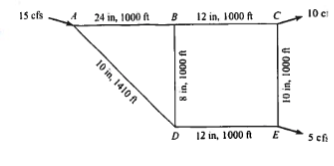
Fig. 8 Pipe network for Example 2#
Known#
Node-arc matrix
Pipe lengths
Pipe diameters
Material
Node elevations (we will have to assume a value)
Unknown#
Pressures at each node
Discharge in each pipe
Governing Principles#
Continunity at nodes
Head loss in pipes (Darcy-Weisbach model)
Energy unique at nodes
Analysis#
Use method of Hamam, Y.M., and Brameller, A. (1971).
Build Input File#
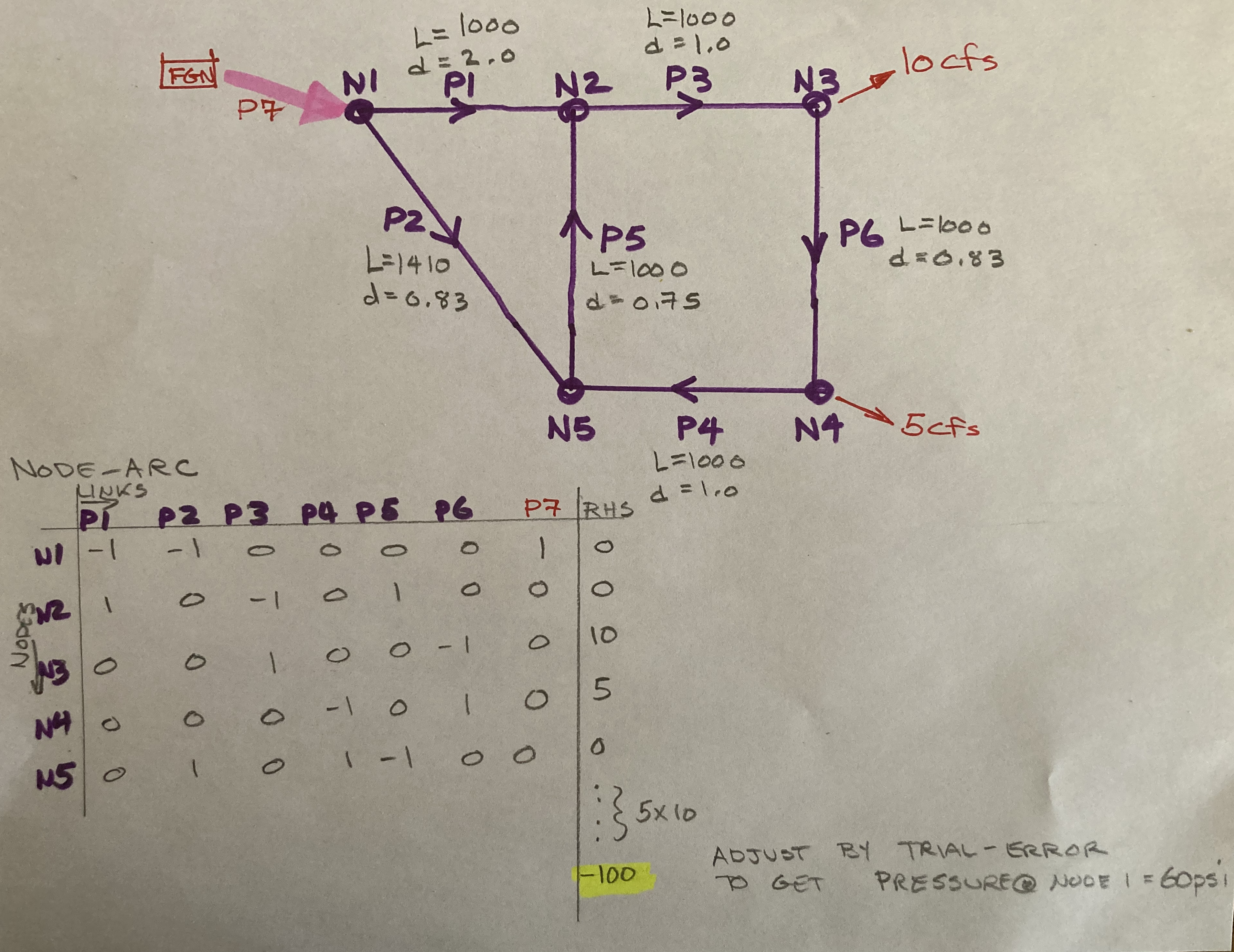
Fig. 9 Pipe network notations for Example 2 input file build#
5 nodes (plus a 6-th supply node in this example it is node 0)
7 pipes (the supply pipe (pink arrow) at node 1 is set as a short and large diameter pipe, pipe P7)
5
7
node elevations
0 0 0 0 0 0
Pipe diameters
2.0 0.83 1.0 1.0 0.75 0.83 10.0
Pipe lengths
1000 1410 1000 1000 1000 1000 10
Pipe roughness heights (based on material)

Fig. 10 Source for HDPE roughness approximation#
0.00001 0.00001 0.00001 0.00001 0.00001 0.00001 0.00001
Viscosity
0.000011
Initial Discharge Vector (just use ones)
1 1 1 1 1 1
The node-arc matrix
-1 -1 0 0 0 0 1
1 0 -1 0 1 0 0
0 0 1 0 0 -1 0
0 0 0 -1 0 1 0
0 1 0 1 -1 0 0
The right-hand side (demands and node 0 head)
0 0 10 5 0 0 0 0 0 0 0 -134.25 # we will change the last value to get desired pressure at node 1
Save this into a file named L15-E2.txt
L15-E2.txt
5
7
0 0 0 0 0 0
2.0 0.83 1.0 1.0 0.75 0.83 10.0
1000 1410 1000 1000 1000 1000 10.0
0.00001 0.00001 0.00001 0.00001 0.00001 0.00001 0.00001
0.000011
1 1 1 1 1 1 1 1 1 1 1 1
-1 -1 0 0 0 0 1
1 0 -1 0 1 0 0
0 0 1 0 0 -1 0
0 0 0 -1 0 1 0
0 1 0 1 -1 0 0
0 0 10 5 0 0 0 0 0 0 0 -134.25
As before now run the script to generate the input file
# A simple script to generate L15-E2.txt
data = """5
7
0 0 0 0 0 0
2.0 0.83 1.0 1.0 0.75 0.83 10.0
1000 1410 1000 1000 1000 1000 10.0
0.00001 0.00001 0.00001 0.00001 0.00001 0.00001 0.00001
0.000011
1 1 1 1 1 1 1 1 1 1 1 1
-1 -1 0 0 0 0 1
1 0 -1 0 1 0 0
0 0 1 0 0 -1 0
0 0 0 -1 0 1 0
0 1 0 1 -1 0 0
0 0 10 5 0 0 0 0 0 0 0 -134.25"""
with open("L15-E2.txt", "w") as file:
file.write(data)
file.close()
# Now run the simulation
pipenet.pipenet('L15-E2.txt')
####ECHO INPUT################
Input File: L15-E2.txt
number of nodes : 5
number of pipes : 7
viscosity : 1.1e-05
-----------------------------
node id: 0 , elevation : 0.0 head : 0.0
node id: 1 , elevation : 0.0 head : 0.0
node id: 2 , elevation : 0.0 head : 0.0
node id: 3 , elevation : 0.0 head : 0.0
node id: 4 , elevation : 0.0 head : -134.25
-----------------------------
pipe id: 0 , diameter : 2.0 , distance : 1000.0 , roughness : 1e-05 , flow : 1.0
pipe id: 1 , diameter : 0.83 , distance : 1410.0 , roughness : 1e-05 , flow : 1.0
pipe id: 2 , diameter : 1.0 , distance : 1000.0 , roughness : 1e-05 , flow : 1.0
pipe id: 3 , diameter : 1.0 , distance : 1000.0 , roughness : 1e-05 , flow : 1.0
pipe id: 4 , diameter : 0.75 , distance : 1000.0 , roughness : 1e-05 , flow : 1.0
pipe id: 5 , diameter : 0.83 , distance : 1000.0 , roughness : 1e-05 , flow : 1.0
pipe id: 6 , diameter : 10.0 , distance : 10.0 , roughness : 1e-05 , flow : 1.0
-----------------------------
node-arc incidence matrix
[-1.0, -1.0, 0.0, 0.0, 0.0, 0.0, 1.0]
[1.0, 0.0, -1.0, 0.0, 1.0, 0.0, 0.0]
[0.0, 0.0, 1.0, 0.0, 0.0, -1.0, 0.0]
[0.0, 0.0, 0.0, -1.0, 0.0, 1.0, 0.0]
[0.0, 1.0, 0.0, 1.0, -1.0, 0.0, 0.0]
-----------------------------
###EXIT TYPE###
Update not changing --exit and report current update
iteration 40
#####SIMULATION RESULTS#####
Results at iteration = : 40
number of nodes : 5
number of pipes : 7
viscosity : 1.1e-05
-----------------------------
node id: 1 , elevation (feet) : 0.0 head (feet) : 134.25 pressure (psi) : 60.006
node id: 2 , elevation (feet) : 0.0 head (feet) : 134.051 pressure (psi) : 59.917
node id: 3 , elevation (feet) : 0.0 head (feet) : 129.393 pressure (psi) : 57.835
node id: 4 , elevation (feet) : 0.0 head (feet) : 128.712 pressure (psi) : 57.53
node id: 5 , elevation (feet) : 0.0 head (feet) : 130.623 pressure (psi) : 58.384
-----------------------------
pipe id: 1 , diameter (feet) : 2.0 , distance (feet) : 1000.0 , friction factor : 0.02 , flow (cfs) : 12.6
pipe id: 2 , diameter (feet) : 0.83 , distance (feet) : 1410.0 , friction factor : 0.017 , flow (cfs) : 2.4
pipe id: 3 , diameter (feet) : 1.0 , distance (feet) : 1000.0 , friction factor : 0.017 , flow (cfs) : 10.636
pipe id: 4 , diameter (feet) : 1.0 , distance (feet) : 1000.0 , friction factor : 0.017 , flow (cfs) : -4.364
pipe id: 5 , diameter (feet) : 0.75 , distance (feet) : 1000.0 , friction factor : 0.016 , flow (cfs) : -1.964
pipe id: 6 , diameter (feet) : 0.83 , distance (feet) : 1000.0 , friction factor : 0.017 , flow (cfs) : 0.636
pipe id: 7 , diameter (feet) : 10.0 , distance (feet) : 10.0 , friction factor : 0.03 , flow (cfs) : 15.0
-----------------------------
Interpret Results and Discussion#
The script handles calculations, the designer has to set-up the input file and create a naming convention for building the input file. Typically would transfer output back to a visual representation as below:
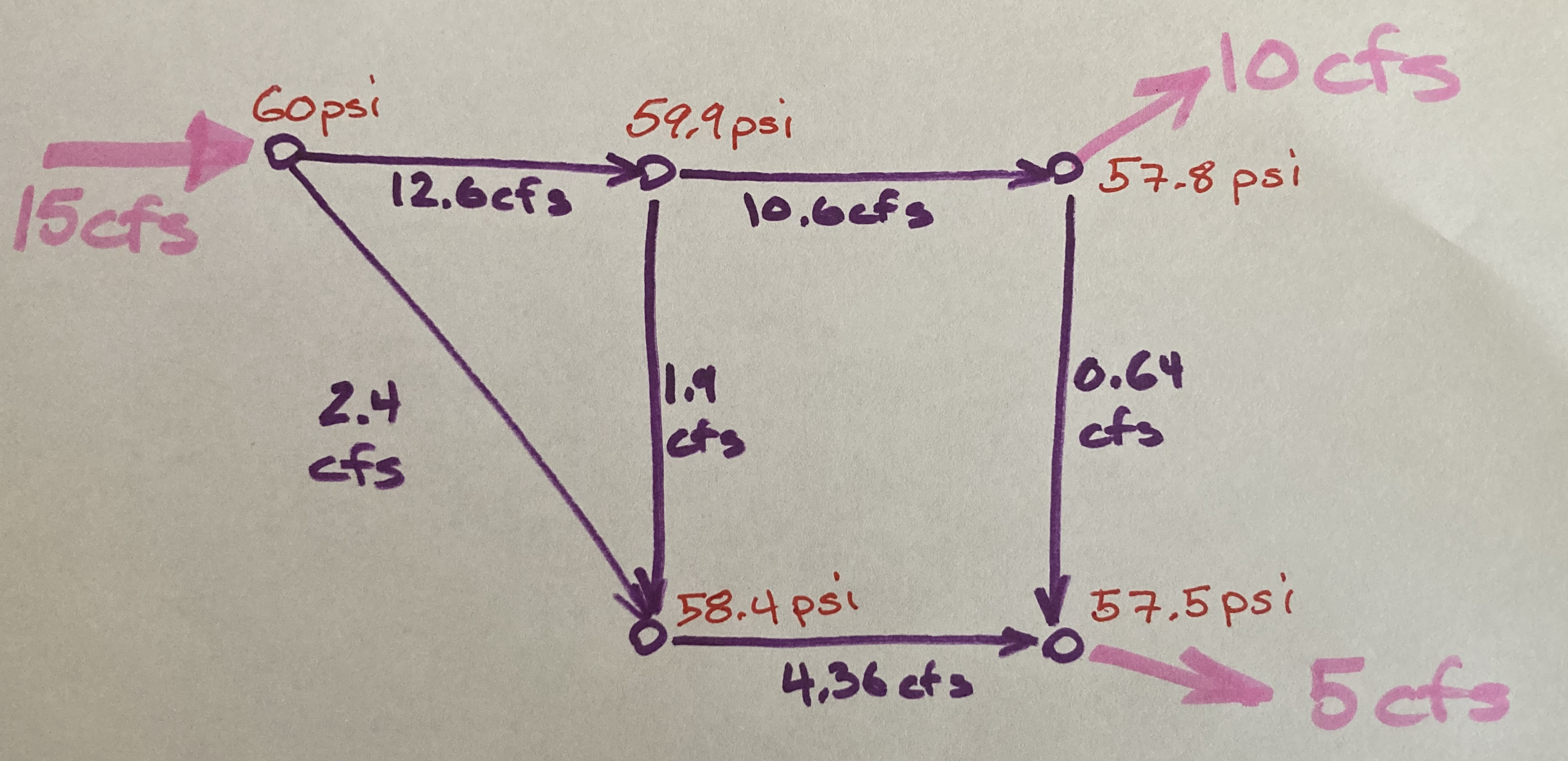
Fig. 11 Pipe network solution for Example 2#
Professional network software makes building the input file a matter of selecting elements from a menu (i.e. nodes = hamburgers, pipes = fries) and laying them out on a table. The FGN is a soft drink piped into the network either by a straw or a french fry.
Example 3:#
This example is just another case.
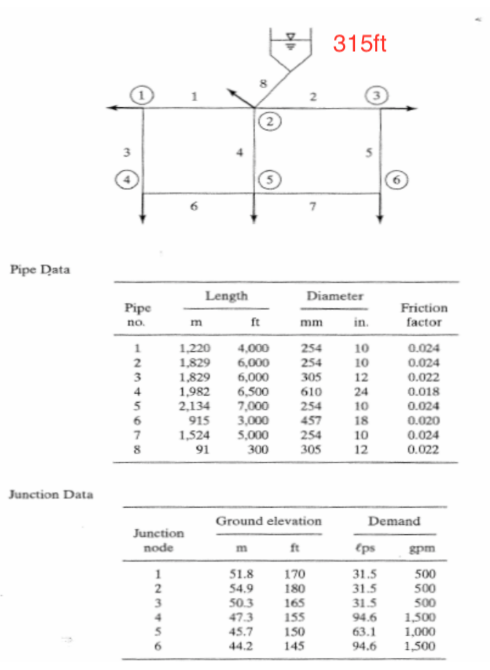
Fig. 12 Pipe network data for Example 3#
The engineer sets up the problem
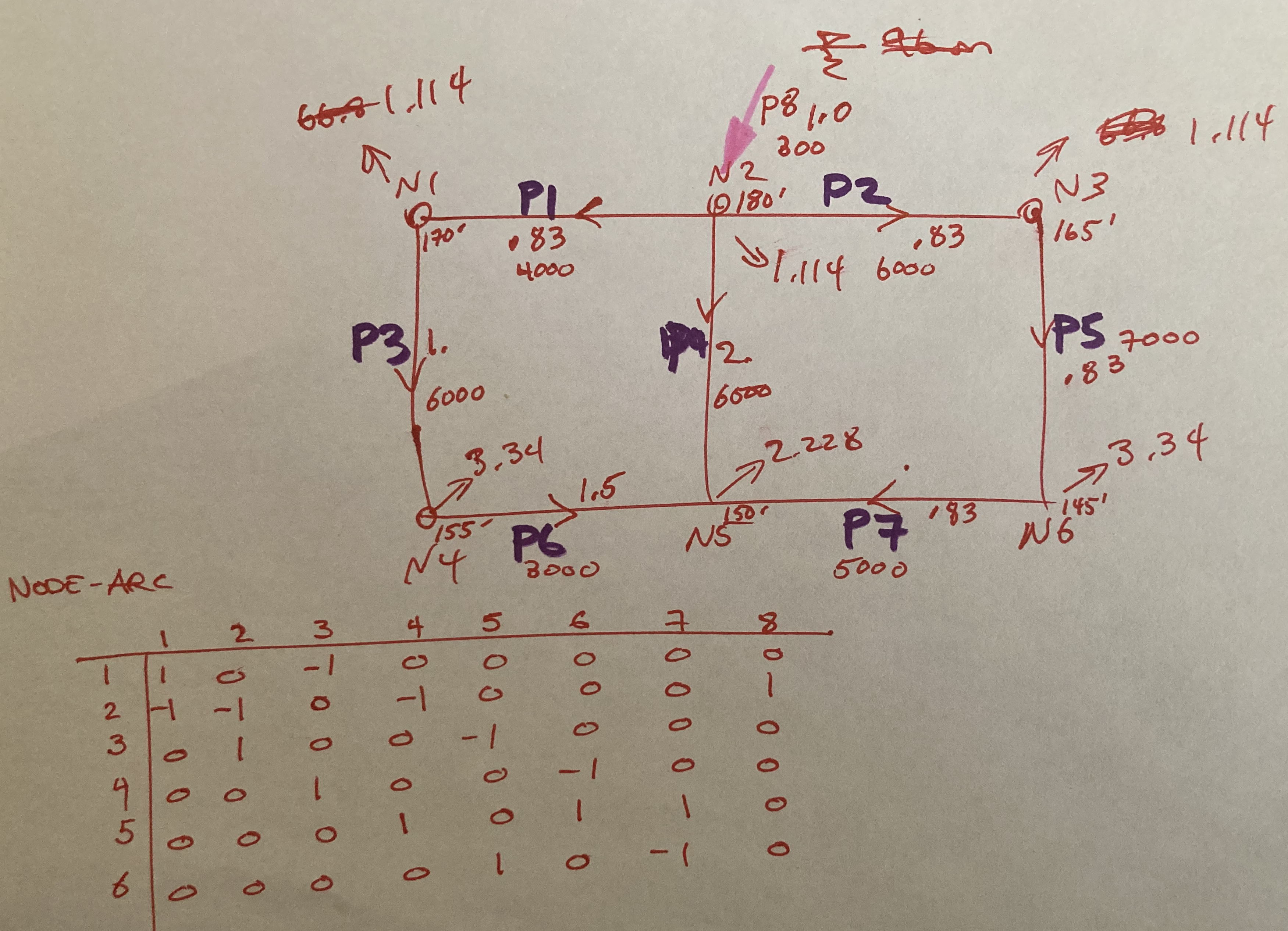
Fig. 13 Pipe network worksheet for Example 3 (US Units)#
Following the same protocol as prior examples, build an input file
L15-E3.txt
6
8
170.0 180.0 165.0 155.0 150.0 145.0
0.83 0.83 1.00 2.00 0.83 1.50 0.83 1.00
4000 6000 6000 6000 7000 3000 5000 300.0
0.00001 0.00001 0.00001 0.00001 0.00001 0.00001 0.00001 0.00001
0.000011
1 1 1 1 1 1 1 1 1 1 1 1
1 0 -1 0 0 0 0 0
-1 -1 0 -1 0 0 0 1
0 1 0 0 -1 0 0 0
0 0 1 0 0 -1 0 0
0 0 0 1 0 1 1 0
0 0 0 0 1 0 -1 0
1.114 1.114 1.114 3.347 2.228 3.347 0 0 0 0 0 0 0 -315
Then run the script
# A simple script to generate L15-E3.txt
data = """6
8
170.0 180.0 165.0 155.0 150.0 145.0
0.83 0.83 1.00 2.00 0.83 1.50 0.83 1.00
4000 6000 6000 6000 7000 3000 5000 300.0
0.00001 0.00001 0.00001 0.00001 0.00001 0.00001 0.00001 0.00001
0.000011
1 1 1 1 1 1 1 1 1 1 1 1
1 0 -1 0 0 0 0 0
-1 -1 0 -1 0 0 0 1
0 1 0 0 -1 0 0 0
0 0 1 0 0 -1 0 0
0 0 0 1 0 1 1 0
0 0 0 0 1 0 -1 0
1.114 1.114 1.114 3.347 2.228 3.347 0 0 0 0 0 0 0 -315"""
with open("L15-E3.txt", "w") as file:
file.write(data)
file.close()
# Now run the simulation
pipenet.pipenet('L15-E3.txt')
####ECHO INPUT################
Input File: L15-E3.txt
number of nodes : 6
number of pipes : 8
viscosity : 1.1e-05
-----------------------------
node id: 0 , elevation : 170.0 head : 0.0
node id: 1 , elevation : 180.0 head : 0.0
node id: 2 , elevation : 165.0 head : 0.0
node id: 3 , elevation : 155.0 head : 0.0
node id: 4 , elevation : 150.0 head : 0.0
node id: 5 , elevation : 145.0 head : -315.0
-----------------------------
pipe id: 0 , diameter : 0.83 , distance : 4000.0 , roughness : 1e-05 , flow : 1.0
pipe id: 1 , diameter : 0.83 , distance : 6000.0 , roughness : 1e-05 , flow : 1.0
pipe id: 2 , diameter : 1.0 , distance : 6000.0 , roughness : 1e-05 , flow : 1.0
pipe id: 3 , diameter : 2.0 , distance : 6000.0 , roughness : 1e-05 , flow : 1.0
pipe id: 4 , diameter : 0.83 , distance : 7000.0 , roughness : 1e-05 , flow : 1.0
pipe id: 5 , diameter : 1.5 , distance : 3000.0 , roughness : 1e-05 , flow : 1.0
pipe id: 6 , diameter : 0.83 , distance : 5000.0 , roughness : 1e-05 , flow : 1.0
pipe id: 7 , diameter : 1.0 , distance : 300.0 , roughness : 1e-05 , flow : 1.0
-----------------------------
node-arc incidence matrix
[1.0, 0.0, -1.0, 0.0, 0.0, 0.0, 0.0, 0.0]
[-1.0, -1.0, 0.0, -1.0, 0.0, 0.0, 0.0, 1.0]
[0.0, 1.0, 0.0, 0.0, -1.0, 0.0, 0.0, 0.0]
[0.0, 0.0, 1.0, 0.0, 0.0, -1.0, 0.0, 0.0]
[0.0, 0.0, 0.0, 1.0, 0.0, 1.0, 1.0, 0.0]
[0.0, 0.0, 0.0, 0.0, 1.0, 0.0, -1.0, 0.0]
-----------------------------
###EXIT TYPE###
Update not changing --exit and report current update
iteration 41
#####SIMULATION RESULTS#####
Results at iteration = : 41
number of nodes : 6
number of pipes : 8
viscosity : 1.1e-05
-----------------------------
node id: 1 , elevation (feet) : 170.0 head (feet) : 310.612 pressure (psi) : 62.849
node id: 2 , elevation (feet) : 180.0 head (feet) : 313.389 pressure (psi) : 59.621
node id: 3 , elevation (feet) : 165.0 head (feet) : 302.355 pressure (psi) : 61.394
node id: 4 , elevation (feet) : 155.0 head (feet) : 311.838 pressure (psi) : 70.102
node id: 5 , elevation (feet) : 150.0 head (feet) : 312.555 pressure (psi) : 72.657
node id: 6 , elevation (feet) : 145.0 head (feet) : 297.841 pressure (psi) : 68.315
-----------------------------
pipe id: 1 , diameter (feet) : 0.83 , distance (feet) : 4000.0 , friction factor : 0.017 , flow (cfs) : 0.648
pipe id: 2 , diameter (feet) : 0.83 , distance (feet) : 6000.0 , friction factor : 0.017 , flow (cfs) : 1.716
pipe id: 3 , diameter (feet) : 1.0 , distance (feet) : 6000.0 , friction factor : 0.017 , flow (cfs) : -0.466
pipe id: 4 , diameter (feet) : 2.0 , distance (feet) : 6000.0 , friction factor : 0.02 , flow (cfs) : 8.787
pipe id: 5 , diameter (feet) : 0.83 , distance (feet) : 7000.0 , friction factor : 0.017 , flow (cfs) : 0.602
pipe id: 6 , diameter (feet) : 1.5 , distance (feet) : 3000.0 , friction factor : 0.019 , flow (cfs) : -3.813
pipe id: 7 , diameter (feet) : 0.83 , distance (feet) : 5000.0 , friction factor : 0.017 , flow (cfs) : -2.745
pipe id: 8 , diameter (feet) : 1.0 , distance (feet) : 300.0 , friction factor : 0.017 , flow (cfs) : 12.264
-----------------------------
Interpret Results and Discussion#
The script handles calculations, the designer has to set-up the input file and create a naming convention for building the input file. Typically would transfer output back to a visual representation as below:
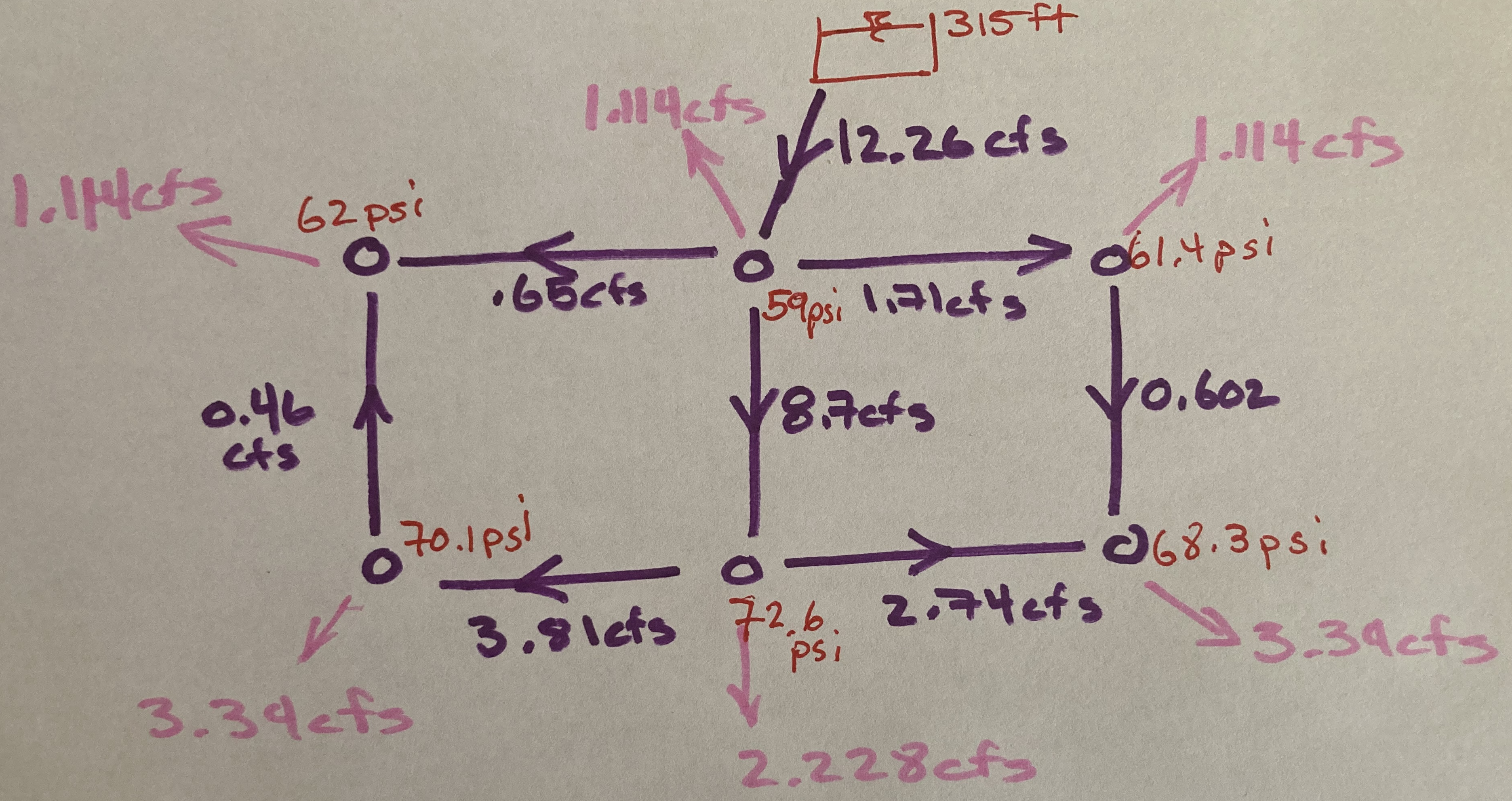
Fig. 14 Pipe network solution for Example 3#
Readings#
Hibbeler, R.C, Fluid Mechanics, 2ed. Prentice Hall, 2018. ISBN: 9780134655413 pp. 469-490
DF Elger, BC Williams, Crowe, CT and JA Roberson, Engineering Fluid Mechanics 10th edition, John Wiley & Sons, Inc., 2013. http://54.243.252.9/ce-3305-webroot/3-Readings/EFM-15.pdf
Cleveland, T. G. (2014) Fluid Mechanics Notes to Accompany CE 3305 at Jade-Holshule (TTU Study Abroad 2015-2019), Department of Civil, Environmental, and Construction Engineering, Whitacre College of Engineering. http://54.243.252.9/ce-3305-webroot/3-Readings/ce3305-lecture12.pdf
Pipe Networks Chin, D. (2006). pp. 27-48 in “Water Resources Engineering, 2 ed.” Prentice Hall, Inc. Chin_27-48
Hydraulics of Pipelines and Pipe Networks Wurbs, R.A., and James, W. P. (2002) Water Resources Engineering, Prentice Hall; pp.130-156; and 156-198. Wurbs and James
Hamam, Y.M., and Brameller, A. (1971) “Hybrid method for the solution of piping networks.” Proc. IEEE, Vol. 118, No. 11, pp 1607-1612. HamamAndBrameller
Jeppson, R.W. (1977) Analysis of Flow in Pipe Networks, Ann Arbor Science pp. 115-129 NewtonRaphsonTheory
Jeppson, R.W. (1977) Analysis of Flow in Pipe Networks, Ann Arbor Science pp. 53-69 FlowInPipeNetworks
Computational Hydraulics in R (for CE 3305) PCHinR
Yoo, D.H. and Singh V. P. (2005) Two Methods for the Computation of Commercial Pipe Friction Factors. ASCE Journal of Hydraulic Engineering, 2005, 131(8): 694-704 FrictionFactors

